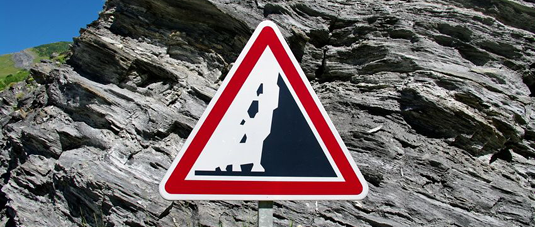
For the past 5 million years, erosion rates in the Alps have been higher than before. A new study links the increase to processes within the Earth’s interior, thus refuting the hypothesis that the phenomenon is related to long-term climate change.
Tectonic forces originating deep within the interior of the Earth are responsible for the rise of the Alps. The process began some 35 million years ago, when northward convergence of the African Plate brought it into collision with the tectonic microplates arrayed along the southern margin of the European Plate. This collision between continental plates resulted in formation of the Alpine mountain range. But as its peaks were raised ever higher, the relentless powers of erosion were eating into their substance. The rocks were slowly fragmented and transported as sediments downslope into the Alpine foreland. “The rate of erosion began to accelerate about 5 million years ago, and in recent years researchers have linked this to global changes in climate,” says LMU geologist Professor Anke Friedrich, who has now studied the process in detail.
In cooperation with Professor Fritz Schlunegger of the University of Berne, Friedrich has used a new methodological approach to analyze the course of erosion in the Alps and its foreland basin in detail. “The method, which was developed in my Institute, enables us to combine datasets obtained using different techniques and analyze them as a whole,” Friedrich explains. This allowed us to systematically investigate a much larger region than was previously possible. The results confirmed that the rate of erosion did indeed increase sharply around 5 million years ago – but not everywhere.
Erosion accelerated only in the West
The rate of erosion increased primarily in the Western sector of the region studied. Moreover, the area affected extends beyond the boundaries of the Alpine mountains, and encompasses the whole of the foreland basin to the North – including the gravel plains around Munich gravel. Furthermore, sediment accumulation increases systematically along a front that runs from Salzburg via Munich to Zürich and Geneva. This finding contradicts the notion that the increase can be ascribed to climatic factors, since these would be expected to have their greatest effect in the uplands rather than in the low-lying basin to the North. Surprisingly, the study uncovered little evidence for increased erosion in the Eastern Alps.
The researchers believe that tectonic forces rather than climatic changes must be invoked to account for this pattern of erosion. The Southern margin of the Eurasian Plate is fragmented into several microplates, and the so-called Adriatic Plate, which forms a large part of the Eastern Alps is being thrust on top of the European Plate. About 5 million years ago, the direction of convergence of the Adriatic Plate changed, causing it to rotate away from the European Plate, and thus partially unburdening the latter.
“As a result of this unloading, the level of the continental crust in the Western Alps has been rising, making it more susceptible to erosion,” says Friedrich. Moreover, this rebound process more than compensates for the erosion rate. It thus explains why the highest peaks in the Alps are found in the West, even though erosion has removed a packet of sediments some 2500 meters thick from the vicinity of Mont Blanc and the Matterhorn.
Note : The above story is based on materials provided by Ludwig Maximilian University of Munich










